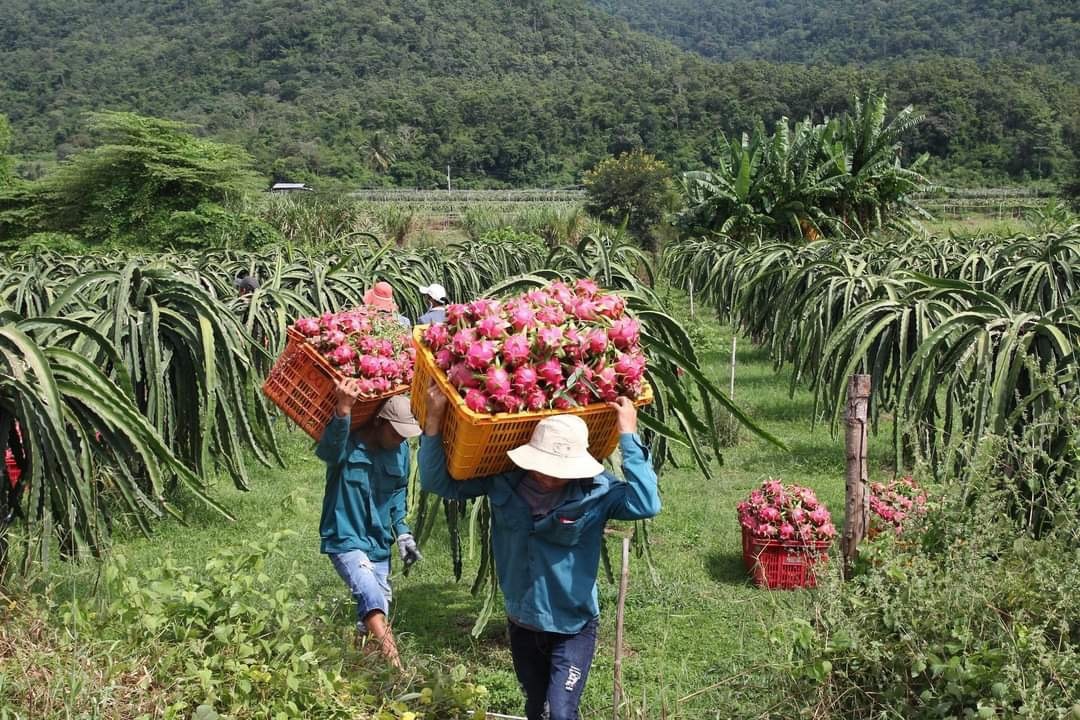Agricultures, Foods, News & Event
Cooperatives seek to expand export markets
Finding and expanding agricultural export markets is one of the important factors for cooperatives to improve production efficiency. However, there are still a series of issues that need to be resolved if they want to open the door to export markets for agricultural products.
Mr. Ly Minh Hung, Director of Thanh Binh Cooperative (Dong Nai), said that China is a large market and has many advantages when the distance to transport goods is shorter than many other markets.
Many difficulties
However, in recent years, this market has had more stringent regulations on imported goods. In particular, China is a large market, so in addition to Vietnamese goods, there are also goods from many other countries exported. Therefore, the pressure to compete with goods and agricultural products is increasing.

According to Mr. Chi Anh, Founder and CEO of Ago Import-Export Company Limited, the US requires Vietnamese dragon fruit to be heat-treated before being imported. However, currently, dragon fruit exporting units in Binh Thuan have to transport it all the way to Ho Chi Minh City because there is only a heat-treatment factory here. It is estimated that each kilogram of dragon fruit will cost more than 20,000 VND for heat treatment costs.
It can be seen that the opportunity for cooperatives and enterprises to export agricultural products is very large when Vietnam has participated in 16 free trade agreements (FTAs) “covering” major markets such as the EU, ASEAN, CPTPP … This will create a huge competitive advantage for strategic agricultural products and have strengths thanks to the commitment to reduce tariffs.
At the same time, this is also an opportunity to increase the attraction of high-quality foreign investment in agriculture, helping Vietnamese cooperatives and enterprises participate deeply in global supply chains.
However, with great opportunities, the competitiveness in exporting goods also increases, especially when the quality standards in importing and exporting goods of countries are very strict and increasingly improved.
Meanwhile, the production of Vietnamese cooperatives and enterprises has encountered many difficulties because recently, the price of input materials has increased, but transportation and logistics costs have not shown signs of decreasing.
A typical example is the Central Highlands region – an agricultural granary with many key export crops. According to Mr. Dang Phuc Nguyen, General Secretary of the Vietnam Fruit and Vegetable Association, transportation overload is occurring when National Highway 14 is the only road connecting most provinces in the region with some provinces in the key economic regions of the South and the Central Coast,
Or like Ho Chi Minh City, this locality also does not have a railway system connecting to the seaport. Notably, public investment disbursement in the first 10 months of 2024 is low, reaching only 22% of the plan, showing that the infrastructure investment situation is not optimistic.
Explore and seize opportunities
As an agricultural country, in addition to domestic consumption, turning agricultural products into commercial products is the right direction to help cooperatives and farmers increase their income from agriculture.
To find export outlets, experts say that cooperatives and enterprises need to focus on building agricultural product brands. In particular, focusing on developing Vietnamese agricultural product brands in general, especially products with competitive advantages. When the brand is strong, it will help increase product value, expand the consumption market and increase the value of agricultural products.
In addition, actively participating in FTAs also opens up many new opportunities for agricultural product exports.
Mr. Chen Peretz, Economic and Commercial Counselor, Embassy of Israel in Vietnam, said that the Israel-Vietnam FTA (VIFTA) is expected to reduce tariffs on a large number of goods and services, making Israeli products more accessible to Vietnamese consumers and businesses and vice versa.
This agreement is especially important for areas where Israel and Vietnam have complementary strengths, especially AgriTech solutions, including precision irrigation, crop protection and greenhouse technology, which can contribute significantly to Vietnam’s agricultural sector.
In addition to footwear and textiles, VIFTA will also help agricultural products benefit from lower tariffs, allowing deeper penetration into the Israeli market.
Not only taking advantage of FTAs, experts believe that enterprises and cooperatives need to pay attention to expanding export markets by promoting trade.
However, according to agricultural expert Hoang Trong Thuy, this requires the “hand” of functional sectors, management agencies, and industry associations in supporting cooperatives and enterprises to organize product introductions for consumers in countries where Vietnamese goods are exported to in order to build consumer confidence in Vietnamese branded goods.
Meanwhile, the foreign trade office system and trade counselors have not really played a good role in providing market information, export consulting, and coordinating well with localities, industry associations, cooperatives, and enterprises, so they have not helped cooperatives and enterprises grasp export opportunities and conditions well.
Mr. Chen Peretz said that through diverse approaches including: organizing trade missions between the two countries, trade promotion meetings (B2B) and participating in domestic and international conferences and trade exhibitions… will encourage Vietnamese cooperatives and enterprises to explore and seize export opportunities in Israel.
With the desire to improve export capacity from internal resources, Mr. Chi Anh said that cooperatives and small enterprises need to have specific plans from the medium, long term to the short term and should have a risk reserve fund to have a “place to rely on” if they encounter difficulties. Along with that, cooperatives need to build sustainable relationships with shipping units to optimize shipping costs as well as limit risks from price fluctuations.
Source: https://vnbusiness.vn/hop-tac-xa/htx-tim-huong-mo-rong-thi-truong-xuat-khau-1103694.html

